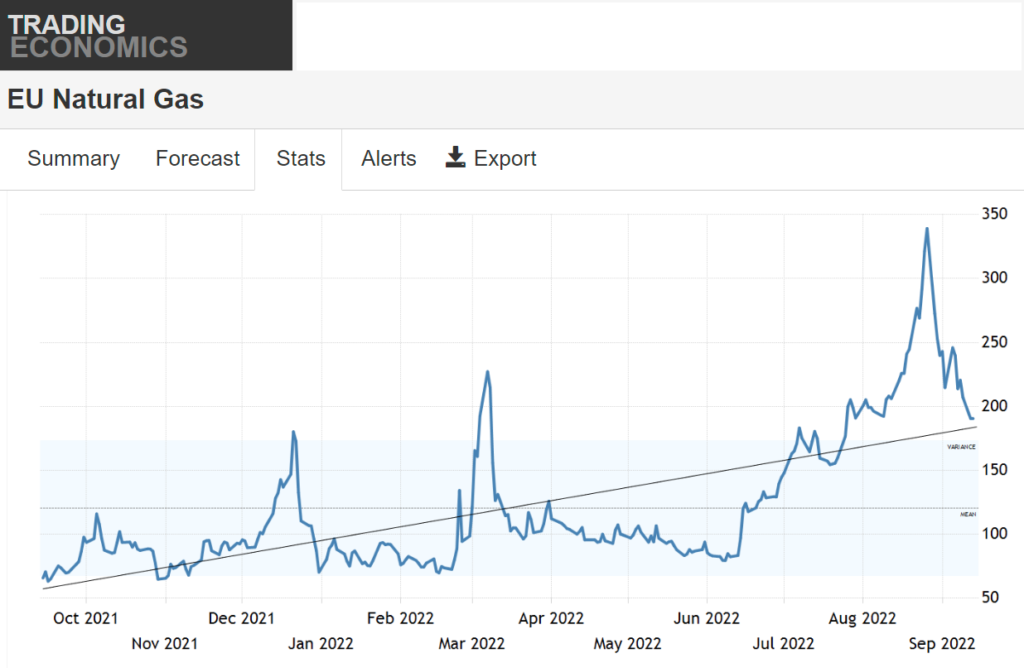Inflation and energy prices to choke Europe’s growth engine
September 13th, 2022
Inflation, especially regarding the cost of energy, is a big problem in the U.S. It’s an even larger problem in Europe, especially Germany. This doesn’t bode well for the rest of 2022 and into 2023, especially as cold weather sets in. And, considering that Germany is the growth engine for Europe and a big trading partner for many U.S. manufacturers, this grim situation is likely to spread far beyond Germany. Prices for all goods, and especially energy prices, are going to choke Europe’s growth engine. An old adage says that when America sneezes, the rest of the world catches a cold. That’s probably going to play out differently this winter, with the illness originating in the middle of Western Europe.
Inflation and Energy Prices Here and There
First, some U.S. data. According to data culled from the Bureau of Labor Statistics, the annual inflation rate varied from 7.5 percent to 9.1 percent throughout 2022. Regrettably, the price of natural gas essentially doubled from January to June, according to the Energy Information Administration. The average city gate price was $5.33 per thousand cubic feet in January and hit $10.12 in June.
Now, data from Germany. According to Trading Economics (https://tradingeconomics.com), inflation in Germany has been a bit lower than that of the U.S., varying from 4.9 percent to 7.9 percent throughout 2022. The story behind the story concerns the price of natural gas. In Europe, it quadrupled in just three months. Regrettably, Europe has too many eggs in one basket, relying too heavily on gas supplied by Russia via Nord Stream 1.

Initially Russia reduced the supply in retaliation to the recent trade sanctions, but eventually it went further. Russia shut down Nord Stream 1 on August 31 for a supposed routine maintenance outage. The announcement stated that the outage was supposed to last just three days, but by Sept. 3 Russia’s gas utility, Gazprom, extended the outage indefinitely. As of Sept. 9, it was still offline. Of course this is more about politics than maintenance. Vladimir Putin made this clear when he stated that the root of the problem was importing replacement equipment, which isn’t possible under the current trade sanctions.
What’s Next? More of the Same
Regardless of the true nature of this outage or the state of Gazprom equipment, shipping any hardware to Russia is unlikely to solve this problem. If Gazprom were to get Nord Stream 1 up and running again, Putin undoubtedly will come up with another excuse to cut the supply.